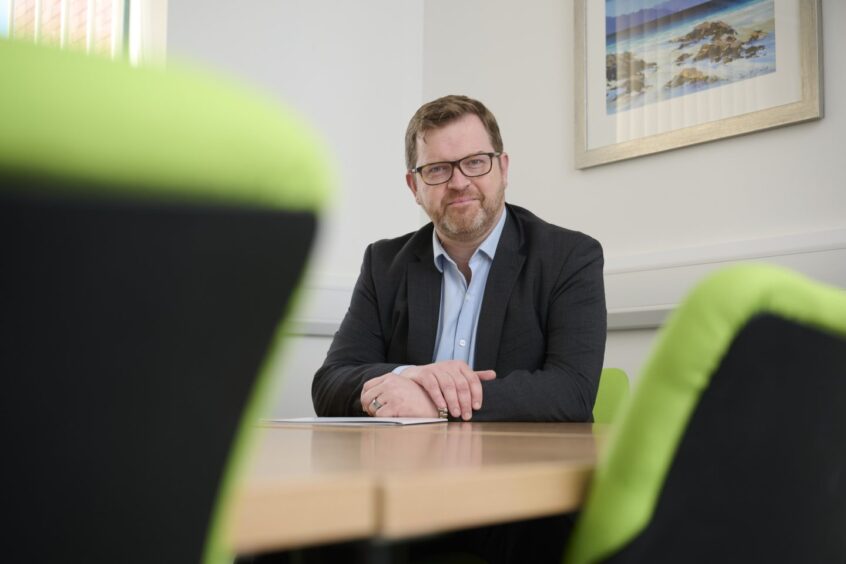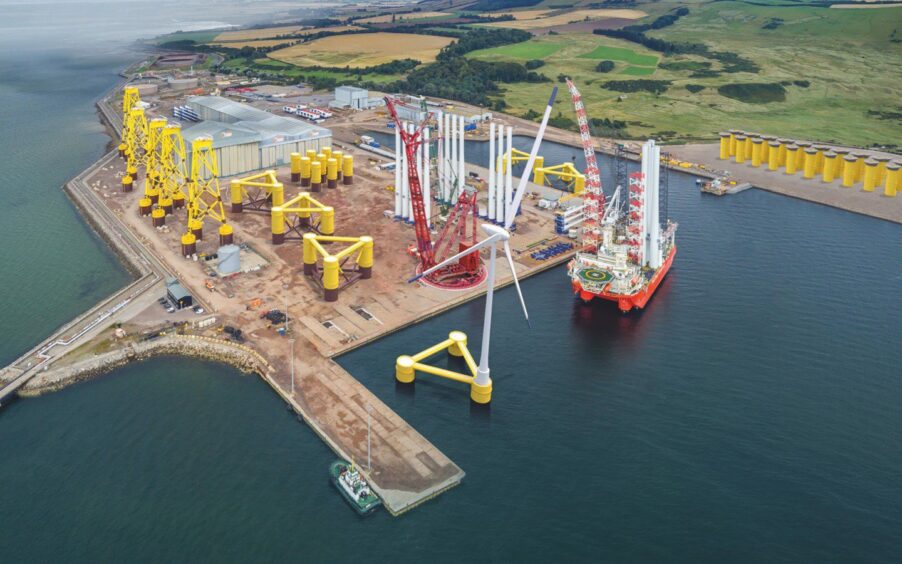
Over the past 12 months, progress on turning the Inverness and Cromarty Firth Green Freeport (ICFGF) into a reality hasn’t just stepped up a gear – it’s been supercharged. We’ve gained huge momentum in positioning the Highlands as a leader in the net zero transition and are already attracting significant interest and inward investment.
This year has seen a £350 million commitment from Sumitomo Electric UK Power Cables to establish a manufacturing facility at Port of Nigg, a £100m credit facility secured by Haventus to accelerate offshore wind development at Ardersier Port, and £50m allocated to expand the Port of Cromarty Firth under the UK Government’s Floating Offshore Wind Manufacturing Investment Scheme (FLOWMIS).
These are just a few examples of how the green freeport is enabling the scaling up of renewable energy projects, establishing the north of Scotland as a key player in the global supply chain.
But there’s more – so much more – to come.
The confirmation of Special Tax Sites within the freeport has been a critical enabler for progress. It means businesses located across 520 hectares of land can now benefit from significant tax incentives, including relief from employer’s National Insurance Contributions and exemption from non-domestic business rates.
These reliefs have driven interest from international investors who can see that the north of Scotland is now emerging as a major hub for the development of offshore wind and associated renewable technologies.
But while those incentives are opening the door to conversations, past traditions and future outlook are helping to convert those discussions into tangible action. Our region is steeped in industrial history, having supported the development and deployment of the North Sea oil and gas since the 1970s. Investors see that we have the know-how and experience to make it happen – we can walk the walk, not just talk the talk.
Now, we’re here at the birth of Scotland’s offshore wind sector. Our ports – like Port of Inverness, for example, which has handled over 300 turbines as a key import and export hub – are seizing the opportunities to evolve alongside the energy transition.
And that transition is happening at a rapid rate. According to research published this month by think tank Ember, renewable energy from wind, solar and hydropower will, for the first time, account for more of the UK’s output in 2024 than fossil fuels. The report also predicts – although there’s a hair’s breadth separating the results – that wind power may even overtake gas as the largest single source of generation.
There’s more than wind blowing industrial change through the Highlands, however. One particularly promising initiative is the Cromarty Hydrogen project, part of a broader effort to scale the production, storage and distribution of green hydrogen. This showcases the green freeport’s capacity to support decarbonisation on a regional, national and global scale.
Our ambition is to position the Highlands as a world-leading hub for green energy and inward investment. Our vision is already taking shape, with international companies eager to establish operations that support the expanding renewables sector. The region’s strategic location, advanced port infrastructure and direct access to offshore wind developments create a unique platform for businesses targeting Europe’s clean energy needs.
Over the next 25 years, Inverness and Cromarty Firth Green Freeport will deliver more than £6.5 billion in investment and support the creation of 18,300 long-term jobs across the UK. It’s a once in a generation, truly transformative opportunity.
The road to realising that vision will not be without challenges, particularly around workforce availability and infrastructure demands.
However, the strong partnerships driving the green freeport’s success will ensure we overcome these hurdles. For example, we’re working holistically through our Powerhouse initiative on the development of skills to ensure the region has the talent needed for a rapidly evolving green energy sector – and in doing so tackling social issues such as rural depopulation.
Looking ahead to 2025, Inverness and Cromarty Firth Green Freeport will continue to play a pivotal role in the energy sector. From offshore wind to hydrogen and beyond, the projects underway will have a lasting impact not only in Scotland but globally. This is a story of global significance, and the energy industry is taking note.
Calum MacPherson is chief executive of Inverness and Cromarty Firth Green Freeport
Recommended for you

 © Simon Price PA Media Assignments
© Simon Price PA Media Assignments © Supplied by Ross Creative Commun
© Supplied by Ross Creative Commun